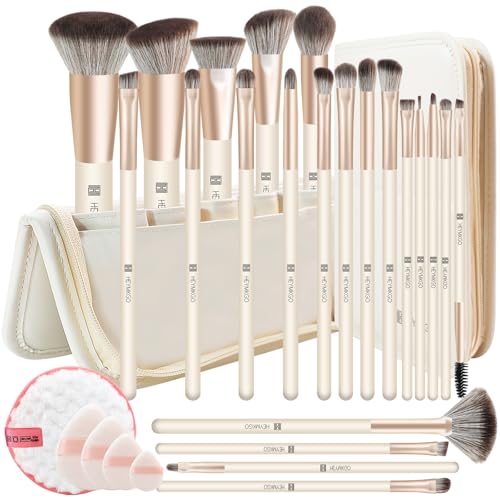- Joined
- Feb 12, 2005
- Messages
- 28,176
- Reaction score
- 3
Put your hair on a four-step diet and reap the benefits with stronger, more lustrous locks! Step 1: Eat plenty of iron-rich protein
Protein is necessary for all cell growth, including hair cells. And the iron found within certain protein foods helps your red blood cells carry oxygen to all cells in the body, including the hair follicles.
Good sources of iron-rich protein include clams, oysters, lean beef, turkey, duck, lamb, chicken, pork, shrimp, and eggs.
Good sources of vegetarian iron-rich protein include tofu, soybeans, lentils, beans, and black-eyed peas.
Step 2: Load up on Vitamin C
Vitamin C improves the body's ability to absorb non-heme iron (also known as vegetarian-based iron), so vegetarians should eat iron-rich vegetables and foods rich in vitamin C at the same meal.
Good sources of Vitamin C include guava, peppers, oranges, grapefruit, strawberries, pineapple, papayas, lemons, broccoli, kale, and Brussels sprouts.
Step 3: Be sure to get your Bs (folate, vitamin B-6, vitamin B-12)
These vitamins are involved in the creation of red blood cells, which carry oxygen and nutrients to all body cells, including those of the scalp, follicles, and growing hair. Without enough B vitamins, the cells will not thrive, causing shedding, slow growth, or weak hair that is prone to breaking.
Good sources of vitamin B-6 include fortified whole-grain breakfast cereals, garbanzo beans, wild salmon, lean beef, pork tenderloin, chicken breast, white potatoes (w/skin), bananas, and lentils.
Good sources of Vitamin B-12 include shellfish (clams, oysters, crab), wild salmon, fortified whole-grain breakfast cereal, soy milk, trout, lean beef, and low-fat cottage cheese.
Good sources of folate include fortified whole-grain breakfast cereals, lentils, black-eyed peas, soybeans, oatmeal, turnip greens, spinach, green peas, artichokes, okra, beets, parsnips, and broccoli.
Step 4: Don't forget the Zinc
The mineral zinc is involved in tissue growth and repair, including hair growth. It also helps keep the oil glands around the hair follicles working properly. Low levels of zinc can cause hair loss, slow growth, and dandruff.
Good sources of zinc include oysters, lean beef, crab, ostrich, pork tenderloin, peanut butter, wheat germ, turkey, veal, pumpkin seeds, chicken, and chickpea
Source
Protein is necessary for all cell growth, including hair cells. And the iron found within certain protein foods helps your red blood cells carry oxygen to all cells in the body, including the hair follicles.
Good sources of iron-rich protein include clams, oysters, lean beef, turkey, duck, lamb, chicken, pork, shrimp, and eggs.
Good sources of vegetarian iron-rich protein include tofu, soybeans, lentils, beans, and black-eyed peas.
Step 2: Load up on Vitamin C
Vitamin C improves the body's ability to absorb non-heme iron (also known as vegetarian-based iron), so vegetarians should eat iron-rich vegetables and foods rich in vitamin C at the same meal.
Good sources of Vitamin C include guava, peppers, oranges, grapefruit, strawberries, pineapple, papayas, lemons, broccoli, kale, and Brussels sprouts.
Step 3: Be sure to get your Bs (folate, vitamin B-6, vitamin B-12)
These vitamins are involved in the creation of red blood cells, which carry oxygen and nutrients to all body cells, including those of the scalp, follicles, and growing hair. Without enough B vitamins, the cells will not thrive, causing shedding, slow growth, or weak hair that is prone to breaking.
Good sources of vitamin B-6 include fortified whole-grain breakfast cereals, garbanzo beans, wild salmon, lean beef, pork tenderloin, chicken breast, white potatoes (w/skin), bananas, and lentils.
Good sources of Vitamin B-12 include shellfish (clams, oysters, crab), wild salmon, fortified whole-grain breakfast cereal, soy milk, trout, lean beef, and low-fat cottage cheese.
Good sources of folate include fortified whole-grain breakfast cereals, lentils, black-eyed peas, soybeans, oatmeal, turnip greens, spinach, green peas, artichokes, okra, beets, parsnips, and broccoli.
Step 4: Don't forget the Zinc
The mineral zinc is involved in tissue growth and repair, including hair growth. It also helps keep the oil glands around the hair follicles working properly. Low levels of zinc can cause hair loss, slow growth, and dandruff.
Good sources of zinc include oysters, lean beef, crab, ostrich, pork tenderloin, peanut butter, wheat germ, turkey, veal, pumpkin seeds, chicken, and chickpea
Source


































